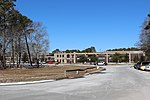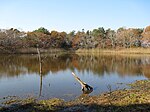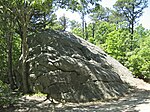Whydah Gally

Whydah Gally (commonly known simply as the Whydah) was a fully rigged ship that was originally built as a passenger, cargo, and slave ship. On the return leg of her maiden voyage of the triangle trade, Whydah Gally was captured by the pirate Captain Samuel "Black Sam" Bellamy, beginning a new role in the Golden Age of Piracy. Bellamy sailed Whydah Gally up the coast of colonial America, capturing other ships as he went along. On 26 April 1717, Whydah Gally was caught in a violent storm and wrecked off the coast of Cape Cod, Massachusetts. Only two of Whydah Gally's crew survived, along with seven others who were on a sloop captured by Bellamy earlier that day. Six of the nine survivors were hanged, two who had been forced into piracy were freed, and one Indian crewman was sold into slavery. Whydah Gally and her treasure of captured pirate gold eluded discovery for over 260 years until 1984, when the wreck was found off the coast of Cape Cod, buried under 10–50 ft (3–15 m) of sand, in depths ranging from 16–30 ft (5–9 m) deep, spread for four miles, parallel to the Cape's easternmost coast. With the discovery of the ship's bell in 1985 and a small brass placard in 2013, both inscribed with the ship's name and maiden voyage date, Whydah Gally is the only fully authenticated Golden Age pirate shipwreck ever discovered.
Excerpt from the Wikipedia article Whydah Gally (License: CC BY-SA 3.0, Authors, Images).Whydah Gally
Marconi Beach Road,
Geographical coordinates (GPS) Address Nearby Places Show on map
Geographical coordinates (GPS)
| Latitude | Longitude |
|---|---|
| N 41.892 ° | E -69.9594 ° |
Address
Marconi Beach Road
02651
Massachusetts, United States
Open on Google Maps










